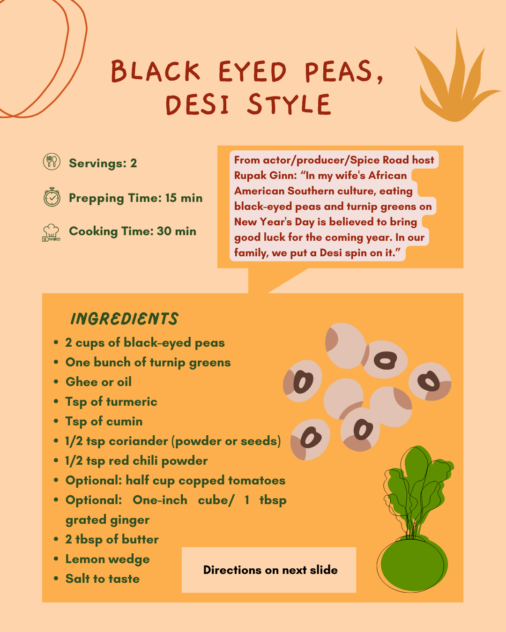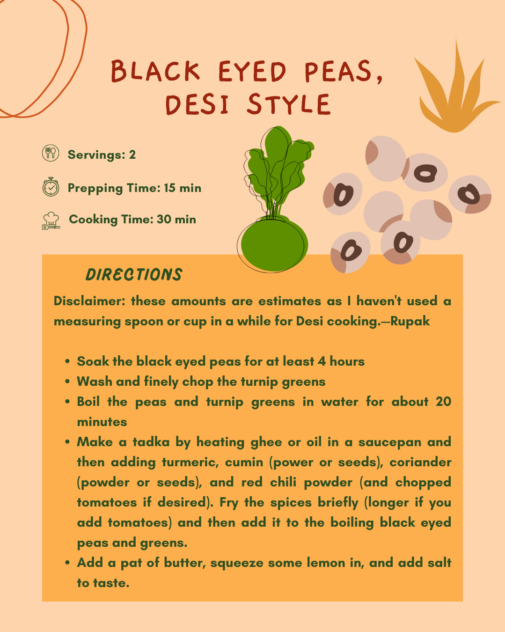By Bedatri D. Choudhury
Journalist and chef Pervaiz Shallwani’s mother moved from Pakistan to Toronto, where she ate her first hot dog in 1975. “She thought it was the grossest thing ever,” Shallwani said in a conversation. The “idea of something that’s been pulverized, stuffed into a casing, poached, and then either steamed, boiled or grilled, or charred,” on paper, does not sound appetizing to anyone, let alone a woman who has grown up eating the dreamiest of niharis and haleems.
But the Chicago-bred Shallwani, who was born in Toronto, grew up eating them in all ways possible—beef hot dogs, hot dogs grilled on a bun, hot dogs cooked up in a mac and cheese, hot dogs wrapped in cheese, and hot dogs rolled into a chapati. When he went on to start Chaat Dog—chaat is a savory snack mix sold in street carts all over South Asia, which Shallwani uses to top hot dogs wrapped in ghee-roasted buns—it wasn’t “fusion” for him. It was American food, because he is an American and this is the food he ate.
“Fusion is a word that gets misused. And honestly, I don’t really like it because it confuses people. You can call this food different things but ultimately, it’s American street food,” he said.

The PBS Independent Lens docuseries Spice Road isn’t so much about South Asian food in the U.S.; it is about how this food is now American. It’s about the many lives and afterlives the cuisine has built for itself as a member of the diaspora here in the U.S. Much like Chef Shallwani. And like the show’s creators, Rupak Ginn, Sami Khan, and Vicky Lee—all filmmakers born to immigrant parents in North America.
Redefining American Food
Shallwani’s Chaat Dog is only a small part of a larger project, which he wants to use to talk about immigrants and how their journeys have added to the idea of what American food is. He wants to call the project “Stinky Lunch Kids Strike Back.”
Ginn too, who grew up in Harlem, never carried Indian food for school lunch. And although Ginn and Shallwani didn’t know each other at the time of writing this piece, they’re clearly in the same club—erstwhile kids with shunned lunchboxes who are striking back in similar ways.
Click to see recipe cards in full, or go here; text-only versions at the end of article.
About a decade ago, Ginn (who hosts Spice Road) and the show’s producer Sami Khan sat near Khan’s ancestral home in the central Indian town of Jabalpur while Raja, Khan’s cousin, was cooking up a mean batch of Biryani. “Inspired by that, Rupak and I started dreaming up a show that would do justice to Raja’s dish and our families’ incredible and complex relationships with food, particularly cuisine from India,” Khan said.
For Spice Road, Ginn traveled across the country—from Bakersfield, California, to Southern Virginia, from New Jersey to Los Angeles—to meet South Asian restaurateurs holding on to centuries of passed-down culinary knowledge, adapting it to make it their own, and feeding people, forming communities, while resisting the monolith of tikka masala that all South Asian food eventually gets reduced to here in this country.
“If you look at what we’ve designed as American food in this country, everything comes from somewhere else,” Chaat Dog’s Shallwani said. “Somebody comes here, and either out of ingenuity or out of necessity, they take what they know and adapt to what is here.”
For show producer Khan, who is biracial and from a Muslim family, this intersection of cultures is “not an academic pursuit but really a matter of survival. If I wasn’t able to blend cultures, then I’m not sure I could exist.”
The impetus to seek out these places came against “the backdrop of all the schisms we’re seeing in this country right now,” said Ginn. “So much xenophobia! We want to say, ‘Hey, look, South Asians are thriving all over and building communities, and finding communities not just with other South Asians but connecting across communities all over this nation.”
“I wanted to introduce this food to people.”
For Nish, who co-owns the Maharashtrian restaurant Mejwaani in Edison, New Jersey, with his wife Supriya, it’d probably have been easier to start a North Indian restaurant and provide more of the food that was already popular. “But there were [already] so many [of those]. I belong to the Maharashtrian community and [that] food was missing from restaurants here,” Supriya said. “I wanted to introduce this food to people.” [Mejwaani Recipes]
Although no one perhaps called her lunches “stinky” back home in Maharashtra, Supriya refused to shy away from showcasing her food in her new home in Jersey.

The couple moved to the U.S. in 2007, in the middle of a recession, after years of working marketing jobs back home in India. When Supriya suggested opening up a restaurant, she was pretty firm about one thing. It’d be a restaurant that showcases the food of her home state, Maharashtra.
Nish, hailing from the neighboring Western Indian state of Gujarat, is (as Supriya puts it) “a total vegetarian.” Before opening Mejwaani, which serves fish and meat, he had never touched meat before, let alone visit a butcher. “He did things which he never did in his life,” Supriya said. Nish, who previously would run away from poultry shops, actually shopped for the kitchen, delivered the food, washed pans, and wiped floors with Supriya in the early days of Mejwaani.
What first started out in the couple’s garage around 2015 evolved into a 25-seater restaurant, and then to its present-day full-sized restaurant form. Supriya is the happiest when students come to Mejwaani seeking a taste of home.
What South Asian Food Can Be
Spice Road opens up the endless possibilities of what South Asian food can be, as it balances what the chefs have learned growing up and how they’re adapting that knowledge to the world they live in. “I think people get caught up in these worlds of traditional, authentic,” Shallwani said, pointing to the fact that hybridity is something built into the very fabric of food systems as people travel, learn, and settle down in different parts of the world.
“Even if we go back to our great grandparents, they would look at what we think of as ‘traditional, authentic,’ and say, ‘That’s not traditional, authentic.’ This idea is constantly evolving with each generation.”

Ginn’s wife, author Nancy Redd, who grew up in Roanoke, Virginia, agrees. The couple, who cook their New Year’s collard greens with Indian spices, met while at Harvard. Food was what they bonded over. “We’d talk about our childhood foods. I’d share some spam with him because that’s what I grew up eating. Spam on toast.”
When they went to an Indian restaurant in Harvard Square, Redd ate with her fingers for the first time. Food, to her, is “one of the most intimate aspects of us, if we’re lucky. And to be able to share that culture is so beautiful.”
Click to see recipe cards in full, or go here; text-only versions at the end of article.
Recipes Passed Down from Generation to Generation
Roanoke is also where South Indian couple Sarah and Peter Raju run the restaurant Taaza. In a white-majority town named after its Indigenous inhabitants, where Asians constitute around 3.2% of the population, the Rajus serve—to table after table—a dish called Gobi Manchurian: cauliflower cooked in an amalgamation of Chinese and Indian spices.

Spice Road’s producer Vicky Lee, who is ethnically Chinese and grew up on New York’s Lower East Side, says how food and its knowledge systems get passed down from generation to generation fascinates her. “It’s like oral history,” she said. “They don’t write it down, they eyeball everything. And I found that in South Asian food too. Then you share that with your children or even with your friends and family.”
For show producer Sami Khan, our individual relationships to food are central to understanding how we view the world and who we really are. “Do we view ourselves in isolation? Do we honor our ancestors with how we eat? And do we truly value the people who grow and cook our food?” These are the questions he constantly asked himself while making Spice Road, and even beyond.
“I only use ‘stinky lunch kids’ because it’s an entry point,” said Chaat Dog’s Shallwani. “For me, [the] ‘strike back’ part is the core of the story of American food.” This is the story that’s being rewritten as we speak, through our TVs, food carts, and through restaurants. The Spice Road does not tell people what South Asian food is, but rather it opens them up to the endless possibilities of what American food can be.
Recipes, Text-Only Version
Full Recipe for Corn and Poblano Chaat Dog, adapted from Pervaiz Shallwani of Chaat Dog, Brooklyn, N.Y.
The chaat for this recipe can be made up to two days in advance and can work well as a side dish. The sev, boondi, chutneys and other South Asian ingredients are available at South Asian markets and online.
TOTAL TIME: 1 hour 30 minutes
SERVES: 8
Ingredients
For the chaat:
- 4 fresh ears corn, shucked
- 1 poblano pepper
- 2 tablespoons olive oil
- 1 small red onion, finely diced
- 1 tablespoon salt
- Cloves from ½ head garlic, minced
- 2 tablespoons chaat masala, plus more to garnish
- 2 tablespoons cilantro-mint chutney, homemade or store bought
- Juice of 1 lime
For the hot dogs:
- 8 all-beef hot dogs
- 4 tablespoons melted ghee or olive oil
- 8 top-load hot dog buns, split using a knife
For the garnish:
- Cilantro and tamarind chutneys, homemade or store-bought
- Fried onions or shallots, such as Trader Joe’s Gourmet Fried Onion Pieces or Maesri Fried Shallot
- Sev (crunchy chickpea-flour vermicelli)
- Boondi (crunchy chickpea-flour balls)
- Chaat masala
- Fresh cilantro leaves
- Pickled peppers of your choice
Directions
- Make the chaat: On a hot grill or in a large sauté pan over medium-high heat, lightly char corn on all sides. Then char the poblano pepper until the skin is well blistered and the pepper starts to soften.
- When corn cobs are cool enough to handle, use a sharp knife to cut corn kernels from cob. Place kernels in a large bowl and discard cobs. Remove the poblano’s blistered skin, stem and seeds. Lay poblano flat, cut into strips, then roughly chop.
- Add oil to a large sauté pan over medium heat. When oil shimmers, add onions and half the salt. Cook, stirring frequently, until onion starts to soften, about 5 minutes. Stir in garlic and cook until mixture begins to caramelize, about 3 minutes more, making sure it does not burn. You want it to be a toasty brown.
- Stir in corn kernels and remaining salt, and cook, stirring occasionally and scraping up any browned bits on the bottom of the pan, until flavors are meld, 5-10 minutes.
- Transfer corn mix to a mixing bowl. Stir in chaat masala, cilantro-mint chutney minced poblano and lime juice. Combine well, taste and adjust flavors as needed. If not using right away, refrigerate until ready to use.
- Assemble the hot dogs: On a hot grill or in sauté pan over medium-high heat, cook the hot dogs, turning occasionally, until nicely blistered. While the dogs are cooking, liberally brush both sides of buns with ghee. In a separate sauté pan, cook buns until toasted,1-2 minutes per side.
- Transfer buns to a platter and cradle a hot dog firmly inside each bun. Top each with about 2 tablespoons corn mixture. Drizzle with chutneys. Shower each dog with 1 tablespoon each fried onions, sev and boondi. Garnish each with a pinch of chaat masala, 3-4 fresh cilantro leaves and 2 pickled peppers. For added spice, finish with a teaspoon of the pickled-pepper brine. Eat over a plate and make sure to have a napkin ready.
Rupak Ginn’s recipe for Black-Eyed Peas, Desi-Style
Rupak: “In my wife’s African American Southern culture, eating black eyed peas and turnip greens on New Year’s Day is believed to bring good luck for the coming year. In our family we put a Desi spin on it as follows:”
Ingredients
- 2 cups of black-eyed peas
- One bunch of turnip greens
- Ghee or oil
- Tsp of turmeric
- Tsp of cumin
- 1/2 tsp coriander (powder or seeds)
- 1/2 tsp red chili powder
- Optional: half cup chopped tomatoes
- Optional: One inch cube/ 1 tbsp grated ginger
- 2 tbsp of butter
- Lemon wedge
- Salt to taste
“Disclaimer: these amounts are estimates as I haven’t used a measuring spoon or cup in a while for Desi cooking!”
Directions:
- Soak black eyed peas for at least 4 hours
- Wash and finely chop one bunch of turnip greens
- Boil the peas and turnip greens in water for about 20 minutes
- Make a tadka by heating four tablespoons of ghee or oil in a saucepan and then adding one level teaspoon of turmeric, one level teaspoon of cumin (power or seeds), half level teaspoon of coriander (powder or seeds), and half level teaspoon of red chili powder (and half cup of chopped tomatoes and/or one inch cube of grated ginger if desired). Fry the spices briefly (longer if you add tomatoes) and then add it to the boiling black eyed peas and greens.
- Add two tablespoons of butter, squeeze a wedge of lemon in, and add salt to taste.
Bedatri D. Choudhury is a culture journalist and film programmer. She lives in New York City.









































